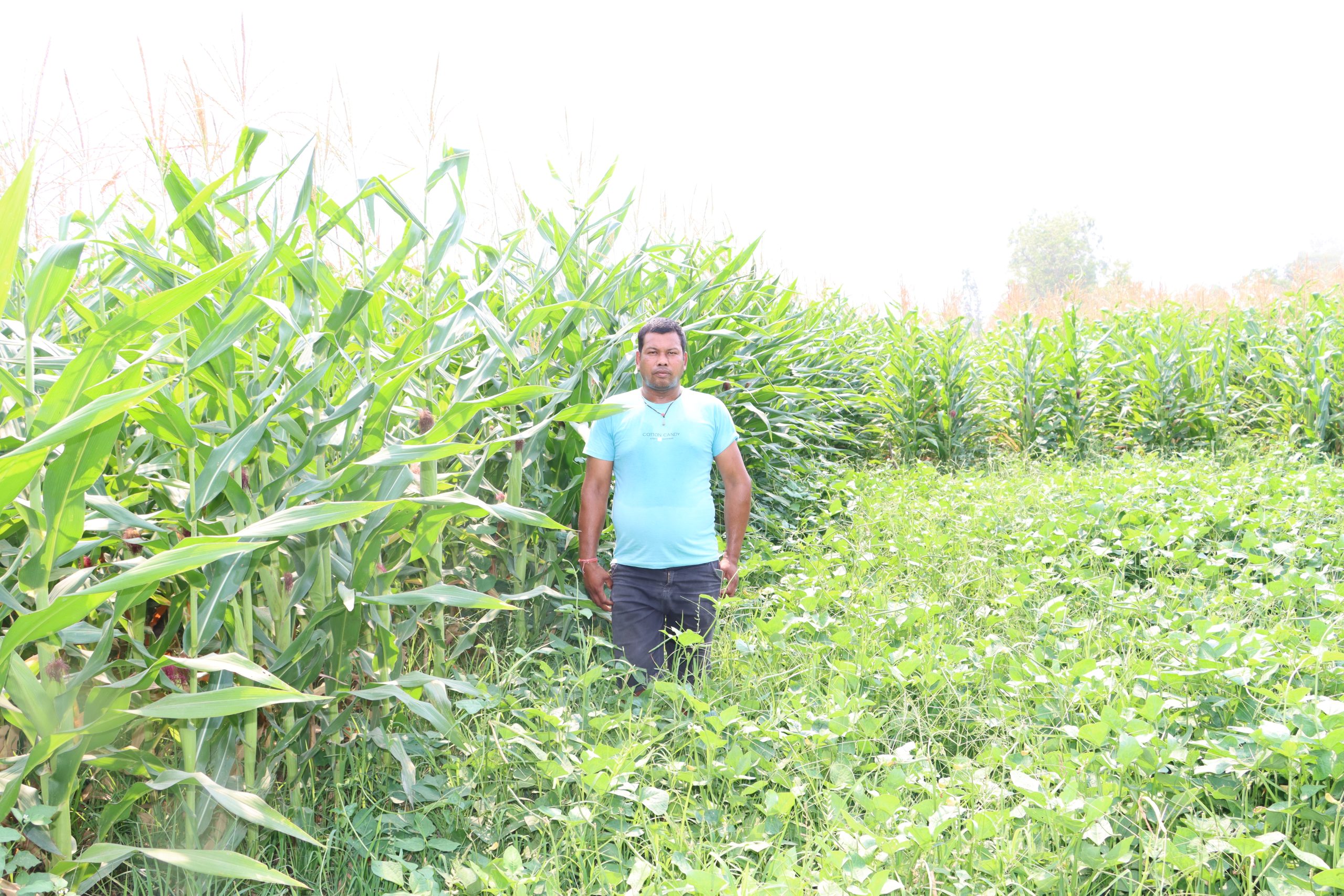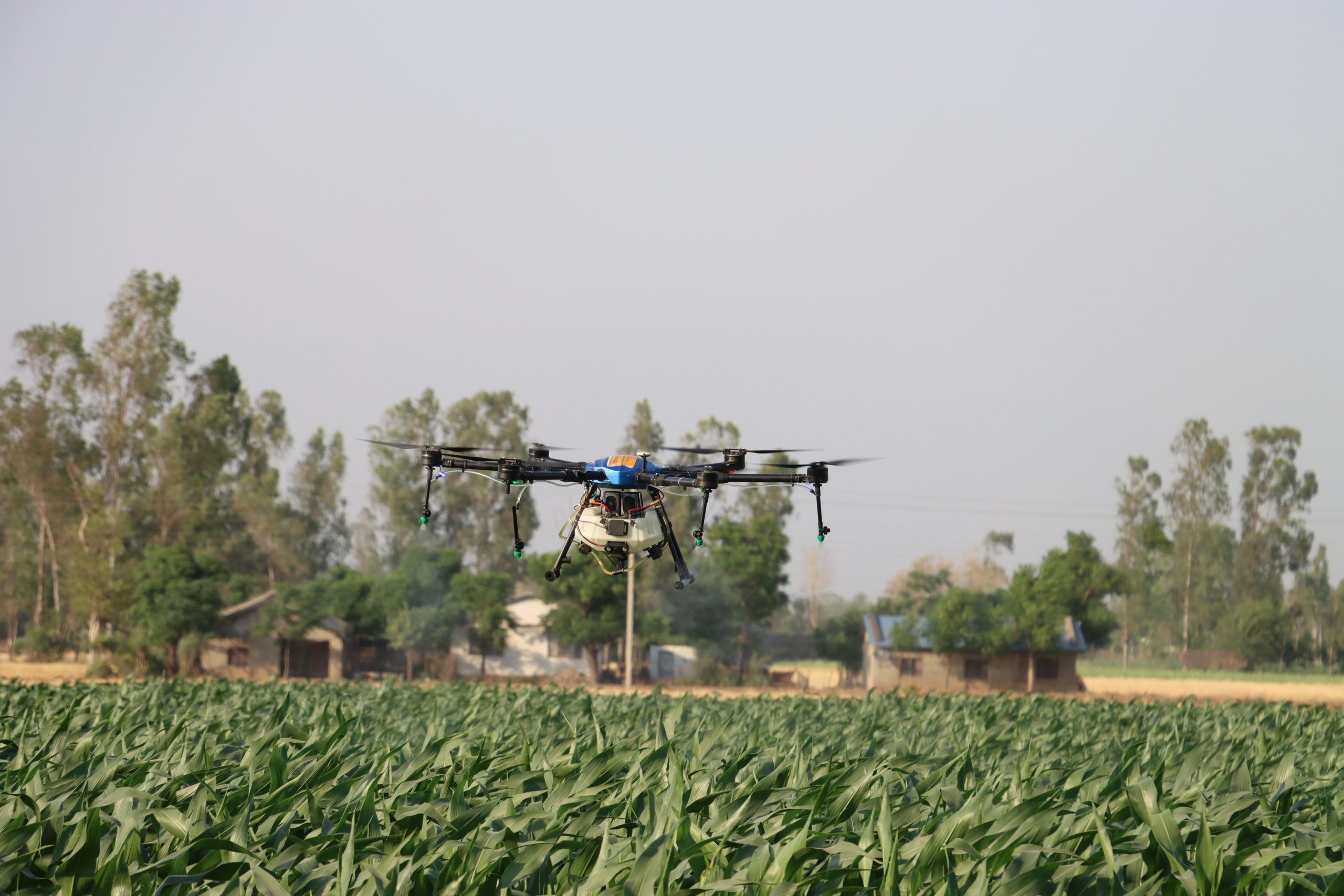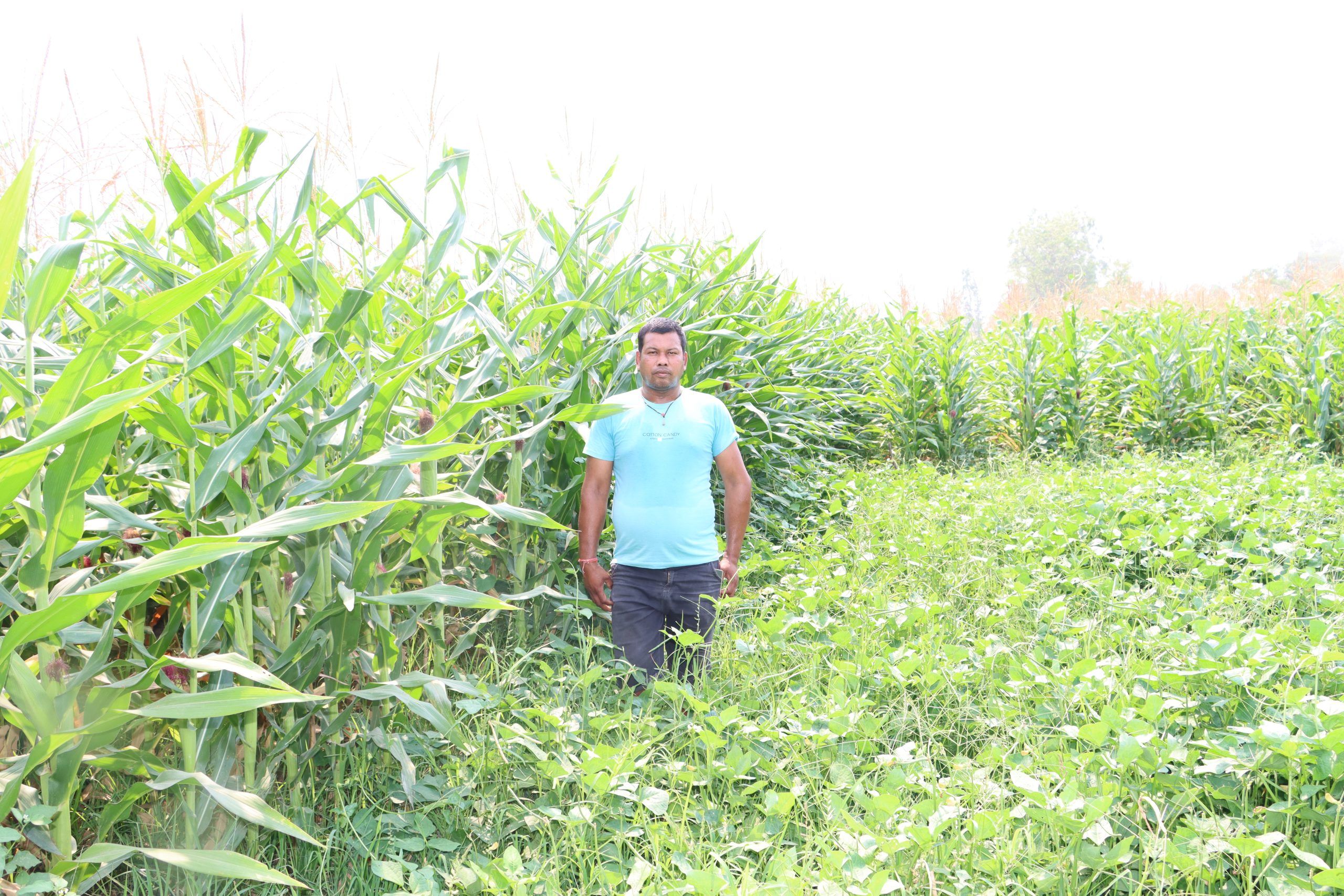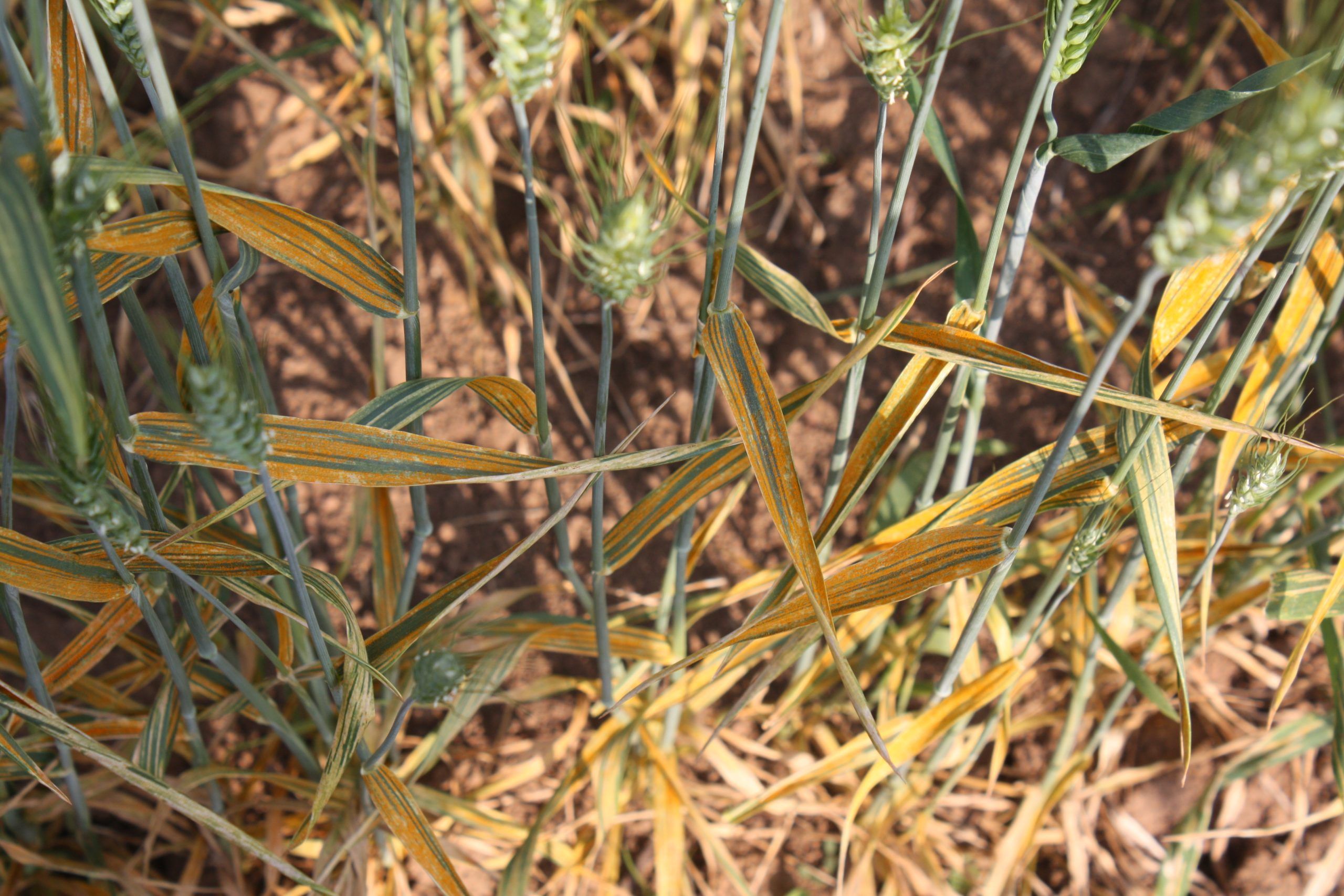Harnessing the benefits of commercial agriculture

Rajendra Kathariya, a 41-year-old resident of Joshipur-2 in Kailali district, far-west of Kathmandu, has transformed his life and that of his family of five through commercial agriculture. Despite many challenges, Rajendra has remained committed to achieving financial sustainability through enhanced farming practices. Over the last two years, his partnership with Nepal Seed and Fertilizer (NSAF) and CIMMYT, in collaboration with Nisrau Multipurpose Cooperative, a partner cooperative of NSAF, has been instrumental in his success.
Moving from traditional to modern farming
Previously, Rajendra cultivated cereal crops using traditional methods which often led to food crises for his family. However, he has now shifted to cultivating various crops throughout the year using modern farming techniques on his 1.02 ha of land and an additional 2.71 ha which he has leased.
“Before NSAF’s support, we only cultivated two crops per year. Now we harvest three crops and are considering commercial maize production,” Rajendra said.
Remarkable achievements in crop production
Last year, Rajendra cultivated rice on 3.72 ha, yielding 8.8 metric tons (t) worth NPR 250,000 (US $1,880.71). Similarly, he sold 3.8t of spring maize from 1.35 ha, earning NPR 110,000 (US $827.51). This year, he expanded maize cultivation to 2.03 ha, with an expected income of NPR 200,000 (US $1,504.57). His potato crop yielded 5.5t worth NPR 125,000 (US $940.35), with an additional 5.5t stored for future sale.
In addition to crops, Rajendra has established a pig farm, earning NPR 400,000 (US $3,009.13) in 2023 from selling pigs. He received a feed-making machine for pigs from NSAF, under its support to agribusiness Micro, Small and Medium Enterprises (MSMEs).
Embracing modern technology and techniques
Rajendra uses both organic and chemical fertilizers and follows improved farming techniques such as hybrid seeds, line sowing, and machinery use. He owns a mini tiller and rents other machinery as needed. This year, with support from NSAF, he used a drone to spray fertilizer on his spring maize, significantly reducing labor and time.
“I have viewed videos of drones spraying fertilizer but never imagined it happening on my spring maize land. As a demonstration, 0.57 ha was used for nano urea spraying. The task was completed within five minutes of the drone taking flight. Similarly, I was astonished to learn that a drone can cover 2.02 ha in a mere 20 minutes,” he shared.
Intercropping and future plans
Rajendra has also implemented intercropping, combining maize with legumes on a 0.10-hectare plot. “Spring maize-legume intercropping is productive and effective for farmers such as me. We can make a profit from legumes, as well as spring maize. I will continue using this practice in the future,” he said.
Financial investments and community impact
The profits from agriculture have helped Rajendra to manage his household comfortably. He can now provide education for his four children, manage household expenses, and also pay the loan that he had taken for his household expenses. In addition, he recently invested NPR 250,000 (US $1,880.71) to build a new pig shed. He also sells his produce in local markets at Joshipur, Kailali.
“I have travelled a long way from being a subsistence farmer to engaging in commercial farming. This shift from traditional to improved farming technologies has been made possible with the support of NSAF/CIMMYT. I am grateful for their assistance and encouragement,” Rajendra said.
Vision for sustainability
Rajendra’s story reflects his dedication and hard work. “I was working as a daily wage laborer in India, hoping to secure a promising future for my children. Today, I can achieve complete sustainability through agriculture and provide quality education and a better life for my children,” he shared.


